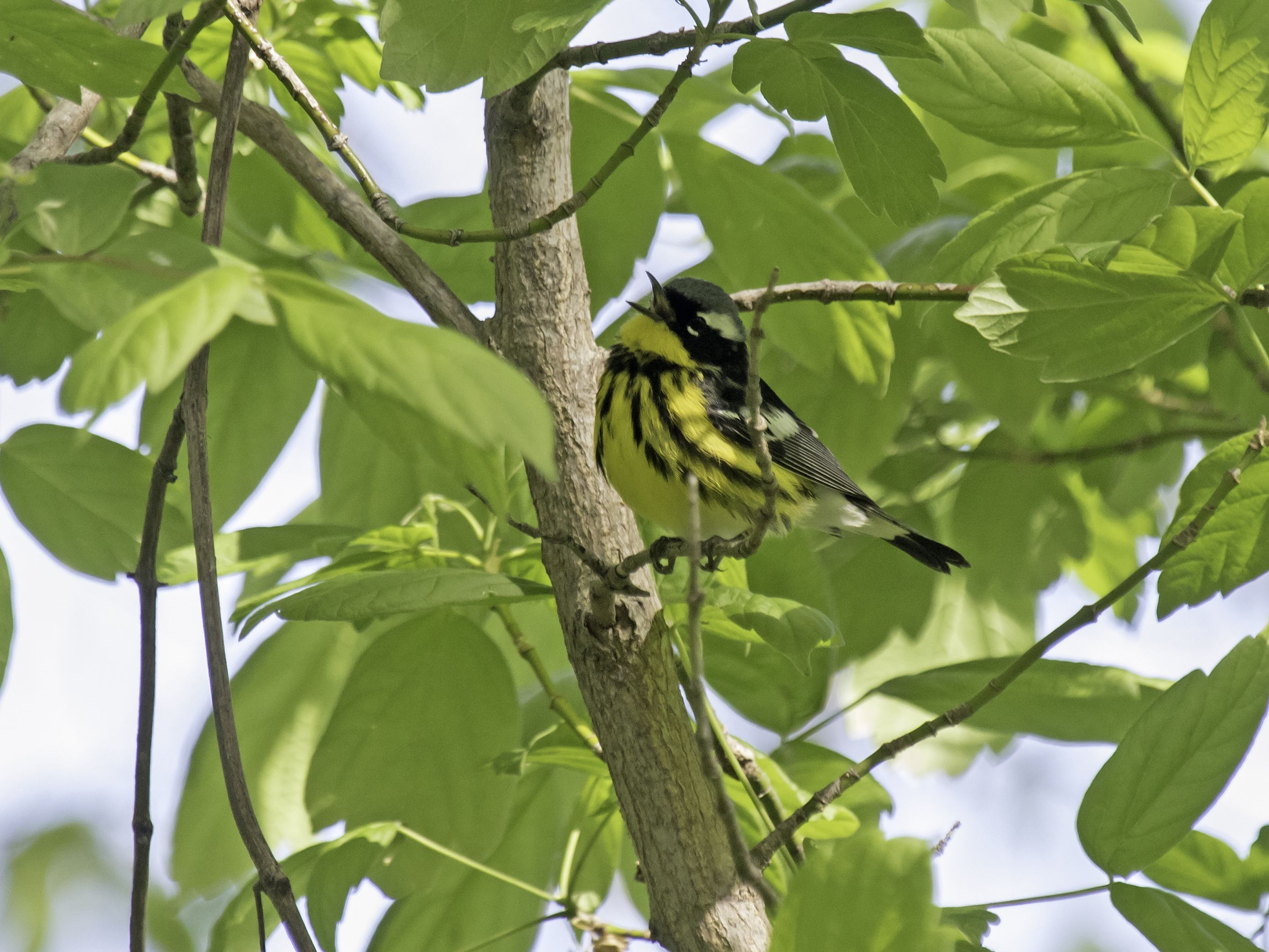
Photo of Magnolia warbler by Phil Swanson.
May’s flood of migratory songbirds is a brief and beautiful glimpse into the diversity of North American birdlife. Species on their way to the boreal forest and the Arctic pass through Omaha, often for just a week or two. Keep watch for an influx of warblers and vireos, including Magnolia Warblers, Tennessee Warblers, Black-and-white Warblers, Blue-headed Vireos, and more. Rarer finds are always a possibility – sign up for Rare Bird Alerts on eBird to get news of unusual species when they’re reported nearby. Urban parks, cemeteries, and bike paths often concentrate migratory birds in a small, convenient location, as they offer birds the best places for food and shelter as they move through the cityscape.
Then suddenly June arrives, and the flood of migrants tapers to a trickle. It can be discouraging, especially if you missed the peak of migration — but, in fact, it’s an opportunity to focus on the species that spend the summer breeding in Nebraska. While May offers a breadth of species, June offers depth: the chance to spend time with our breeding birds and get to know them better, particularly our native grassland species. Dickcissels appear in grassy, weedy spots all over the state. Just beyond the metro area in rural landscapes, listen for the jazzy burbling of Bobolinks, the plaintive whistling of meadowlarks, and the cricket-like buzzing of Grasshopper Sparrows. In city neighborhoods, watch for Carolina Wrens finding quirky places to build a nest, Northern Cardinals setting up shop in bushes and holly trees, and Song Sparrows tucking their eggs deep in weedy edges.
Returning to the same site multiple times or observing birds close to home throughout the spring and summer offers a window into the full cycle of the breeding season. Watch for the arrival of male birds and contests between neighbors as they strive to establish their territories. Birds singing for potential mates and rivals alike makes late spring dawn choruses rich and varied. Then, after establishing pair bonds and beginning the hard work of caring for eggs and raising young, many songbirds don’t sing as much. But there is still plenty to see, because the birds are busy foraging for their hungry chicks’ next meal. Keep an eye out for fledglings hopping on the ground — for early nesters such as American Robins, it can be quite early in the year. At all times, maintaining a respectful distance from the birds lets them do what they do best. Enjoy the show — and see how the habitats we provide in backyards and parks become homes for a new generation of birds.











